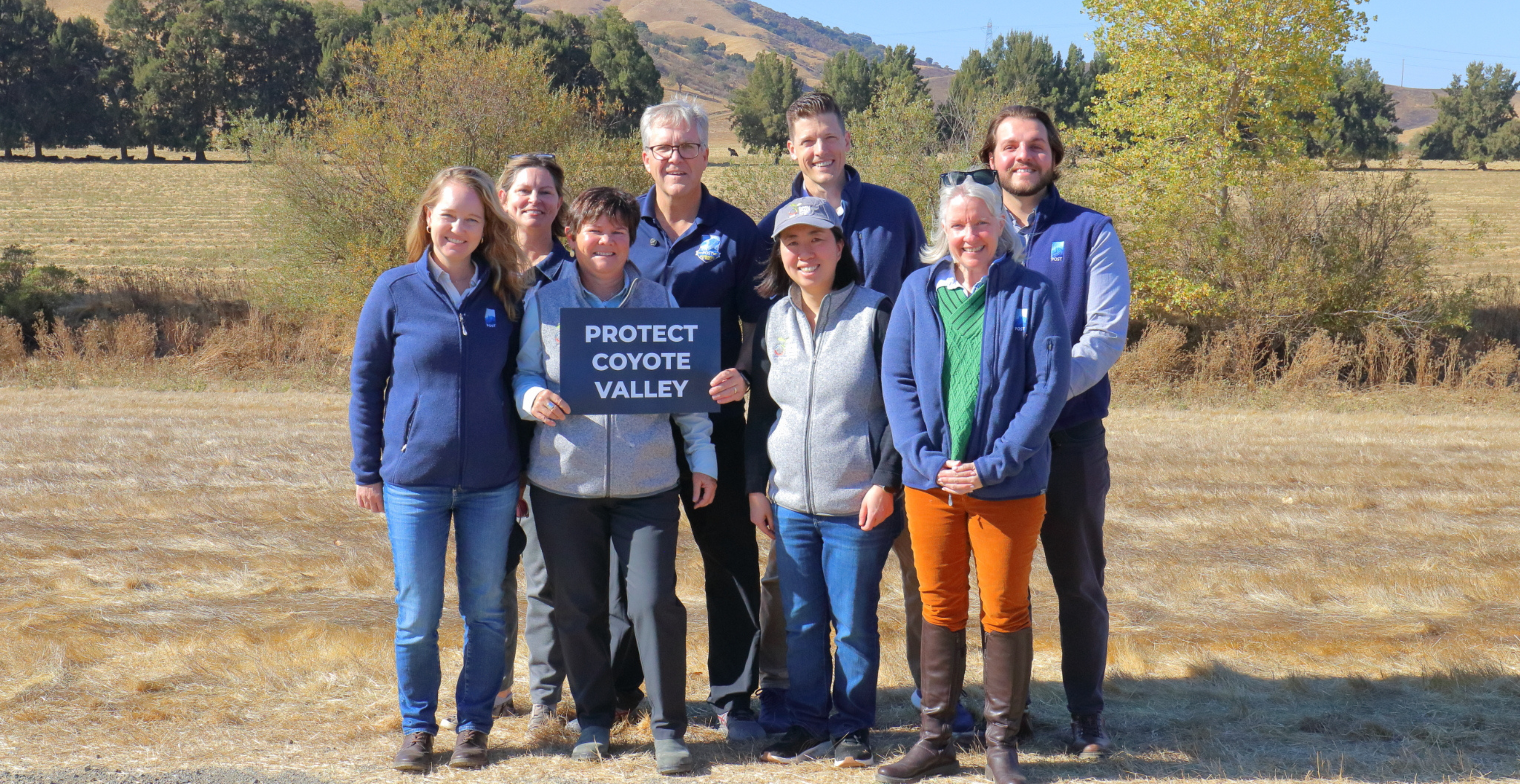November 14, 2024 - The Peninsula Open Space Trust (POST) has announced the transfer of 376 acres of land in North Coyote Valley to the Santa Clara Valley Open Space Authority. Keep reading to learn more about this historic milestone.
 Walter Moore, President of POST (left), and Andrea Mackenzie, General Manager of the Santa Clara Valley Open Space Authority (right), sign official documents for the Laguna Seca land transfer on November 8, 2024.
Walter Moore, President of POST (left), and Andrea Mackenzie, General Manager of the Santa Clara Valley Open Space Authority (right), sign official documents for the Laguna Seca land transfer on November 8, 2024.
POST purchased the land in 2019 as part of a historic public-private collaboration with the Authority and the City of San José to conserve nearly 1,000 acres in northern Coyote Valley, marking a turning point toward environmental protection in the region’s priorities for land use in an era of accelerating climate change.

Walter Moore, President of POST (left), and Andrea Mackenzie, General Manager of the Santa Clara Valley Open Space Authority (right), pose for a photo at Laguna Seca.
Laguna Seca is located northwest of the intersection of Bailey Avenue and Santa Teresa Boulevard at the southern edge of San José (see map below).
Historically, it has been an important seasonal lake and wetland ecosystem. As the largest freshwater wetland remaining in Santa Clara County, it acts as a natural flood basin, absorbing and moderating water flow into nearby Fisher and Coyote Creeks, especially during heavy rains. This absorption function also helps recharge the underground aquifers that support the water supply for the greater San José area.
Map of Laguna Seca property in North Coyote Valley. Click to view full size.
Walter Moore, President of POST (left), and Andrea Mackenzie, General Manager of the Santa Clara Valley Open Space Authority (right), show off their inked thumbs after signing the official land transfer documents.
Laguna Seca also serves as a key wildlife passage, connecting the Mt. Hamilton and Diablo Range to the east with the Santa Cruz Mountains foothills to the west. The Coyote Valley corridor is vital for the east-west movement and survival of many species. It also acts as an important stop for birds on the Pacific Flyway. The historic Laguna Seca wetland complex once spanned more than 1,000 acres in a low basin where Fisher Creek meets Coyote Creek. In the past, the wetland existed nearly year-round, where water would fan out and fill the basin in the rainy season, at times up to 10 feet deep.

Andrea Mackenzie, General Manager of the Santa Clara Valley Open Space Authority (left), gives a high five to Payton Hammer, POST's Land Transactions Coordinator.
“With this transfer, public ownership of Coyote Valley continues to grow. A key priority for us, in partnership with POST and the City of San José, is planning the restoration of the Laguna Seca landscape to increase the abundance of groundwater and re-establish the floodplain after more than a century of drainage and encroachment,” said Andrea Mackenzie, general manager of the Authority. “The seasonal wetlands that appear here are just a small example of what can happen at a larger landscape scale. With this transfer, the Authority will continue our work to restore the Laguna Seca so that it can provide its many benefits to people and wildlife.”

Linda Kwong, the Open Space Authority's Deputy Conservation Manager, helps organize the land transfer documents.
“Having the Authority take ownership of Laguna Seca from POST is a significant milestone in a journey we began more than five years ago, in partnership with the City of San José,” said Walter T. Moore, president of POST. “The public’s consistent support for conserving Coyote Valley’s ‘last chance’ landscape is vital to realizing all the benefits this landscape can provide. And no organization is as prepared as the Authority to advance its long-term environmental health and continue this important work.”
POST transferred the property to the Authority for $16 million, which is approximately 60% of POST’s original purchase price of $21.16 million in 2019. To fund the purchase, the Authority received $6 million from the California Natural Resources Agency’s Urban Flood Protection grant program and $10 million from a state budget allocation administered by California State Parks. The Authority’s board voted to authorize the transfer on August 22, 2024.
Read the full press release here.
![]()


